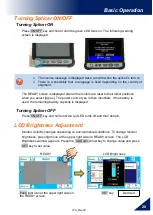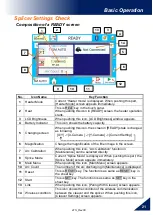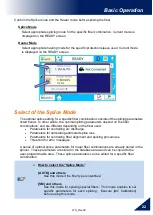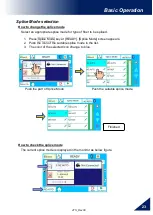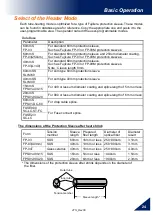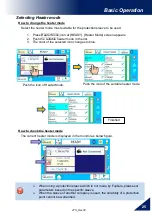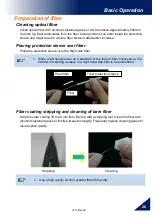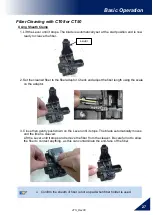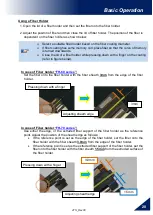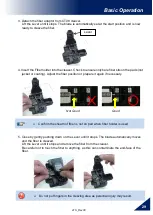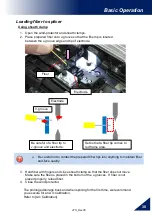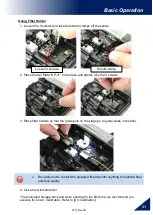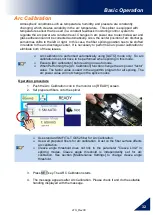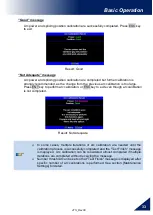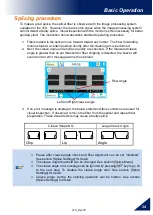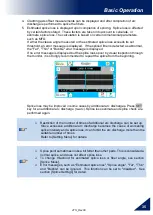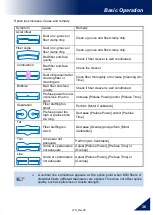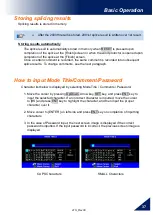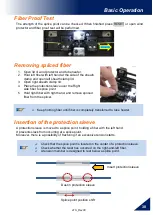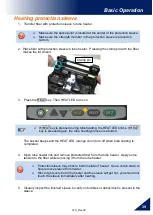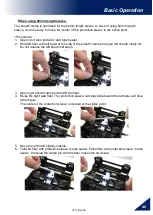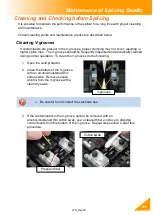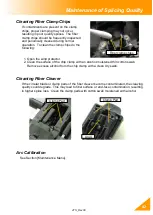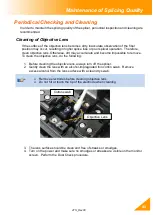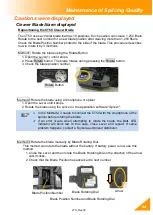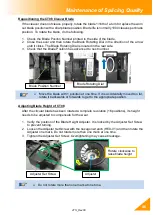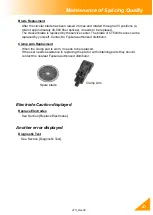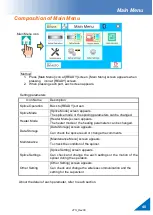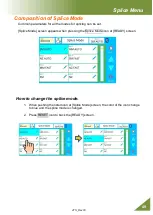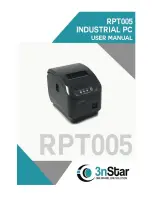
41S_Rev00
34
Basic Operation
Splicing procedure
To make a good splice, the optical fiber is observed with the image processing system
equipped in the 41S. However, there are some cases when the image processing system
cannot detect a faulty splice. Visual inspection with the monitor is often necessary for better
splicing yield. The instruction below describes standard operating procedure.
1.
Fibers loaded in the splicer move forward toward each other. The fiber forwarding
motion stops at a certain position shortly after the cleaning arc is performed.
2.
Next, the cleave angle and end-face quality are checked. If the measured cleave
angle is greater than its set threshold or fiber chipping is detected, the buzzer will
sound and an error message warns the operator.
3.
If no error message is displayed, the below stated end-face conditions are used for
visual inspection. If observed, remove the fiber from the splicer and repeat fiber
preparation. These visual defects may cause a faulty splice.
Cleave Shape NG
Large Cleav
e
Angle
Chip
Lip
Angle
Pause after cleave angle check and fiber alignment can be set “disabled”.
See section [Splice Settings] for detail.
The cleave angle threshold can be changed. See section [Splice Menu]
The cleave angle error message can be ignored by pressing SET key to go on
to the next step. To disable the cleave angle error. See section [Splice
Settings] for detail.
Cleave angle, during the splicing operation can be hidden. See section
[Splice Settings] for detail.
Fiber Angle
Left and Right cleave angle

